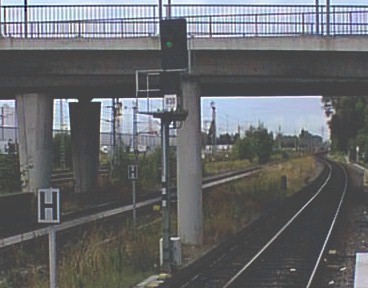 |
This Ks signal shows
Ks 1 (clear, expect clear). The white-black post plate tells
us that this is a permissive signal: If
signal is at stop or defective, we may
pass and proceed on sight until the next signal. |
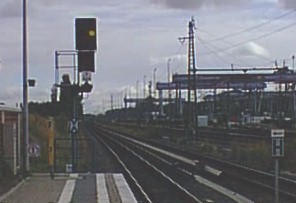 |
In the counter direction the Ks signal serves a distant
signal only (i.e. it cannot show stop nor clear, just expect clear or
expect stop) as can be determined by it's distant signal post plate.
Currently it shows aspect Ks 2 (expect stop). To the right there is an
H-board for this line, indicating where halting trains must stop. |
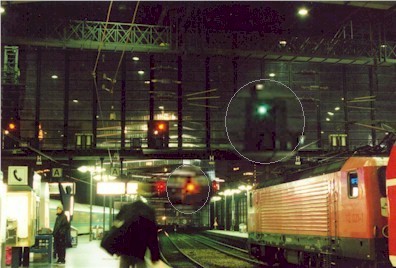 |
At Berlin Zoo, there are some fine
examples of Ks signals.
Above the loco, you see a green signal at Ks 1 (clear, expect
clear) (enlarged). To the left, you see two amber signals at
Ks 2 (clear, expect stop) that have a white marker light to
the lower left of the main lantern, indicating
these signals are distant signal repeaters. The repeater at
Ks 1 has its white light turned off (since it is at clear).
The next signal for the train, also enlarged, shows
amber for Ks 2 (clear, expect stop).
|
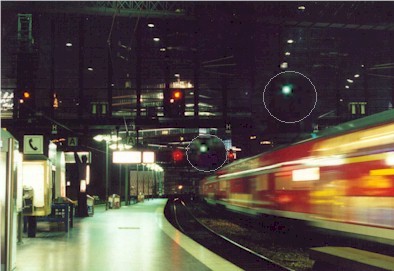 |
A few moments after the above shot:
The train has just departed, and the signal that was previously at
Ks 2 has changed to Ks 1 (clear, expect clear) since
the next main signal also has changed to clear. |
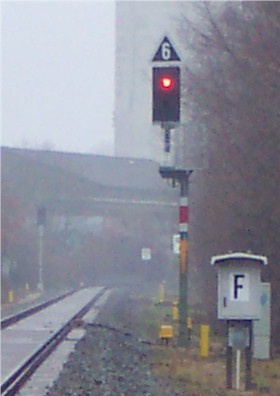 |
A Ks combined
signal at Bad Segeberg. The upper white-red-white post
plate tells us it is an absolute main signal, and the yellow
triangle below means that it also displays
the distant signal information for the
next main signal. The Zs 3
tells us we cannot go faster than 60 km/h. The "F" box
contains the signal telephone (An old German word for telephone is
Fernsprecher, lit. "far-speaker", hence the "F"). |
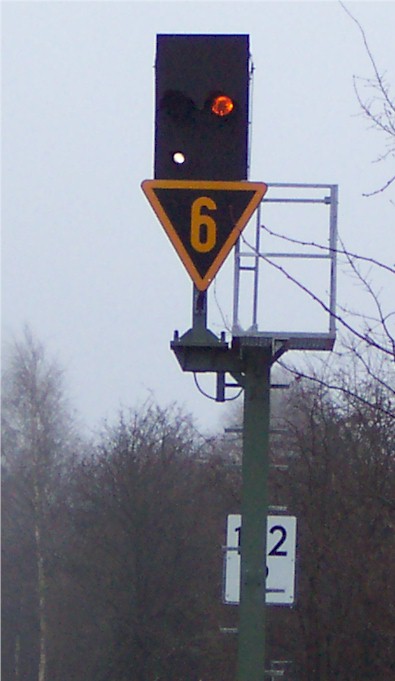 |
The
corresponding distant signal at "expect stop". The white light, which
is below the main light tells us that this is a repeater.
Would the white light be higher than the main light, it
would tell us that this is a distant which is closer than braking
distance to its main signal.
|
| The
following pictures are by courtesy of Michael Urlaub |
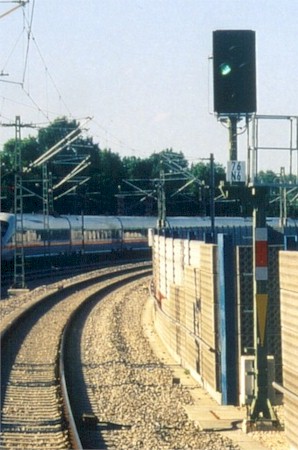 |
A Ks signal displaying a green
light.
Below the signal you see the white-red-white post plate (=main
signal) and a yellow
triangle plate (=Ks distant signal), so this is a combined signal, showing both home
and distant aspects.
It therefore displays the aspect Ks 1: clear,
expect clear.
|
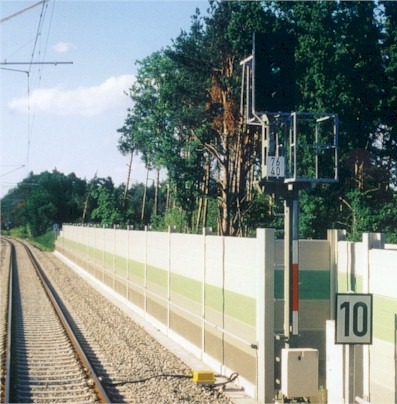 |
Another Ks signal displaying Ks 1. Since it does not
carry a distant signal post plate but only a main signal plate, its
meaning is "clear", but it doesn't tell us anything about the aspect of
the signal in advance.
The board displaying the "10" is an Lf 7, a
permanent speed restriction commencement signal, indicating that from
this point on the speed limit is at 100 km/h.
|
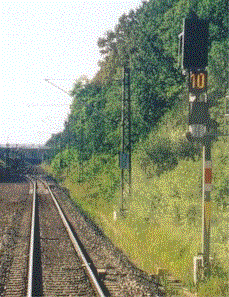 |
Another Ks combined signal. The green light indicates
clear, and it is flashing because it indicates a speed restriction, which
is announced by the amber "10", which is a Zs 3v
speed announcing indicator, so the overall meaning is: "Clear, expect
clear with 100 km/h".
|
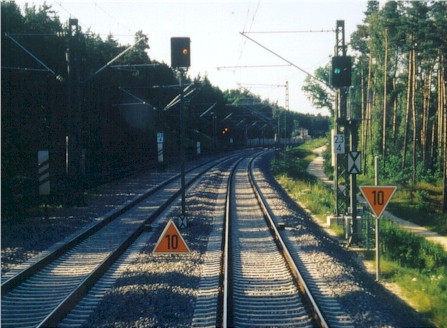 |
In the foreground you see two Ks
distant signals (indicated by the distant
signal post plate). The left one shows Ks 2: expect
stop, the right one shows Ks 1: expect clear. The two yellow
triangles are Lf 6 permanent speed restriction warning boards,
announcing a permanent speed restriction of 100 km/h. (So the
right distant is to be read as "expect clear with 100 km/h").
Whether the triangle points upwards or downwards is a matter of
available space, the meaning is the same.
On the leftmost track you can spot three Ne 3 distant signal count-down
markers, followed by an Hp distant signal
(the two slanted yellow lights), displaying Vr 0: expect stop.
|
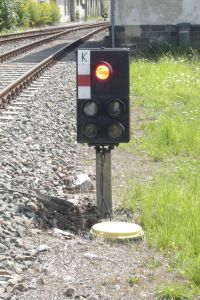 |
A dwarf Ks signal displaying Hp 0: stop |
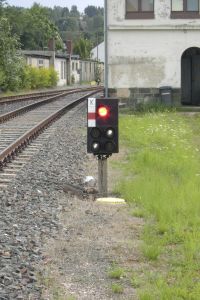 |
The signal now displays Hp 0 + Sh 1: stop for train movements, shunting movements may proceed. |
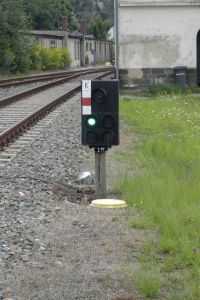 |
Signal displaying Hp 1: clear |













 home
home picture index
picture index email
email EZMG signals
EZMG signals Sk signals
Sk signals